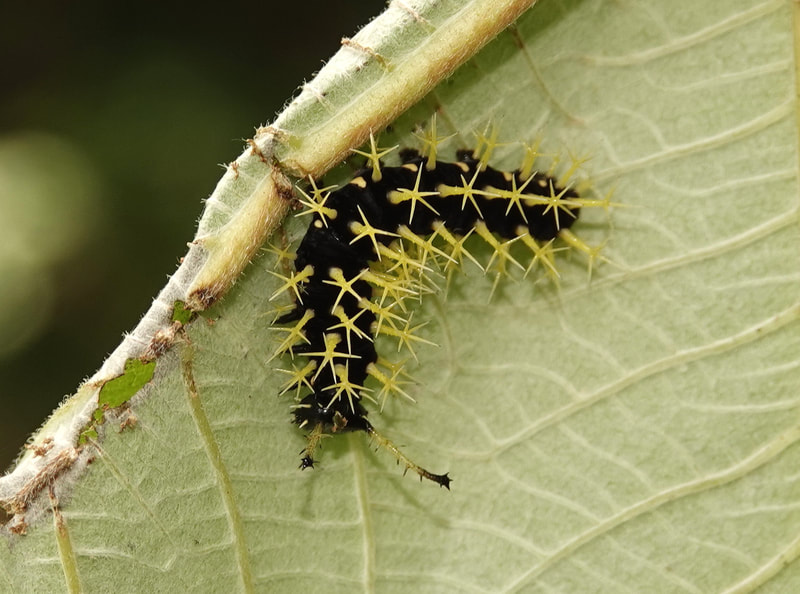Of the moths, the pyrale Lygropia tripunctata was a new species for me and Carathis gortynoides was also new. Rayner had provided me with a photo of the very similar species Carathis alayorum ages ago but I had not seen either myself before.
|
Moth-trapping overnight produced a few species of moths and a nice Cicada species. I'm not sure what its called yet but we haven't seen it before. In 2009 Alan F Sanborn from Barry University, Florida published the 'Checklist, new species and key to the cicadas of Cuba (Hemiptera, Cicadoidea, Cicadidae)'. I've emailed him asking for a copy of the paper so I'm hoping I will be able to identify it then. A total of 12 species, five genera, four tribes, and two subfamilies comprise the Cuban cicada fauna. Of the moths, the pyrale Lygropia tripunctata was a new species for me and Carathis gortynoides was also new. Rayner had provided me with a photo of the very similar species Carathis alayorum ages ago but I had not seen either myself before. We gave our driver Duviel a day off today so he went back to Habana last night, and we then spent the day exploring the hotel gardens and local area. First off with the reptiles: the two commonest species seemed to be the Cuban White-fanned Anole Anolis homolechis and the Cuban Brown Anole Anolis sagrei. Females and youngsters of the former have a rufous colouring to the head and have a pale dorsal line down the back. Later as we were watching for the Tailed Cecropians, Doug spotted a large anole on a mango sitting high up in one of the trees. It is the endemic Western Giant Anole Anolis luteogularis which is only found west of Zapata and on the Isle of Youth. This is another species that I had wanted to see here and was part of the reason for staying here for several days. On our previous stays we have never seen the Antillean Palm Swifts that nest here in the thatch of the bar next to the large swimming pool. but this time they were very obvious going in and out of their nests On the north side of the hotel grounds there was a rough flowery area with lots of butterflies There were lots of Cuban Crescent Anthanassa frisia and Phaon Crescent Phyciodes phaon and our first Polydamas Swallowtails Battus polydamas. The calls of the endemic Cuba Trogon were almost constant and a small party of Smooth-billed Anis were were working through the freshly turned plot below the pool bar. From the bridge overlooking the river we saw Fulvous Hairstreak Electrostrymon angelia and Doug then spotted the feeding damage of Mosaic Colobura dirce on a small Cecropian tree just below us next to the water. A female Sleepy Orange Abaeis nicippe was flying up and down the track looking for small Senna plants on which to lay its eggs and a Queen Danaus gilippus larva was hiding under a Asclepias curassavica leaf.
0 Comments
Leave a Reply. |
Welcome to our Blog
Here we will post interesting news about what we and others have seen in Cuba. Archives
March 2024
Categories |
























 RSS Feed
RSS Feed